Baroque Art – The Styles and Concepts of Baroque Period Art
The Baroque movement began in Europe in the early 1600s and was popular in certain countries for almost a century. It was a movement that affected almost all areas of life including literature, music, architecture, and art. This article will take the reader on a journey that will leave them with a clear understanding of what Baroque art is as well as which artists made it so influential.
A Brief History of Baroque Art
Each art movement is shaped by the circumstances of its time. Specific events related to politics, religion, conflict, and innovation may affect the way artists choose to express themselves. Each era has brought something unique to the world of art. Therefore, to fully understand Baroque art, it is best to first learn a bit about its history.
The Origins of the Term “Baroque”
There are many theories as to how the Baroque movement got its name. The etymology of the word “baroque” is French. However, many believe that it was adapted from the word baroco, which comes from Latin. The term was used in the study of formal logic to describe something that is unnecessarily convoluted or obscure.
During the 1500s, the word “baroque” was also used by jewelers to describe pearls, which were misshapen. This way of describing imperfect pearls was common all over Europe.
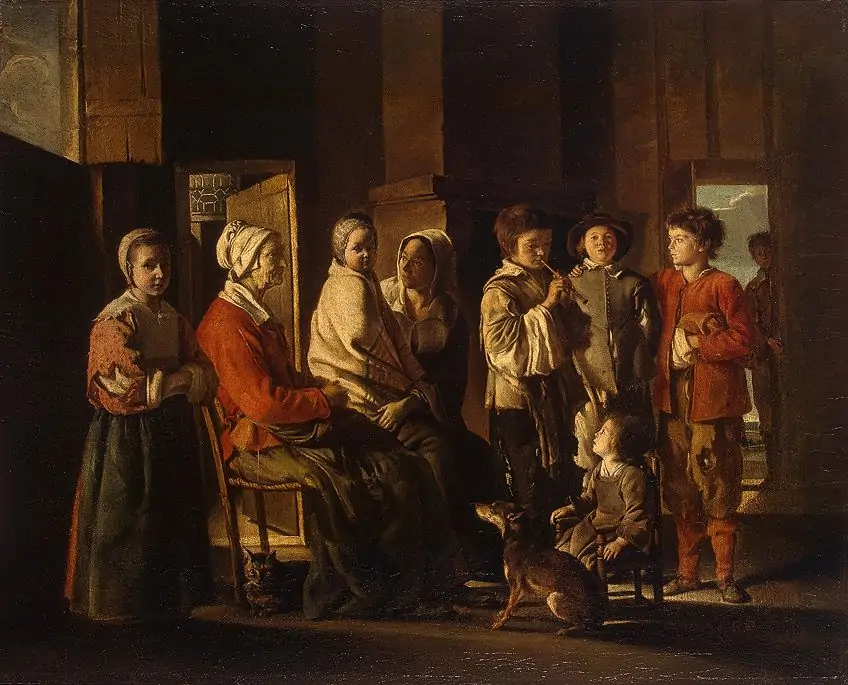
Each country simply adapted it to fit more easily into its specific language. For example, the term barroco was used in Portugal. Another belief is that “baroque” was adapted from the surname of Frederico Barocci. Barocci was an Italian Mannerist painter known for his colorful and chaotic artworks. The flamboyance of his famous Madonna of the People (1579) has evident parallels with later Baroque artworks. Thus, it would not be surprising if inspiration was drawn from him.
Whatever the case may be, the term “Baroque” became one that was used frequently in the 1600s.
The word “Baroque” came to represent anything fanciful and ostentatious, from fashion to music to architecture, and so on. The paintings created during the Baroque period, which were incredibly bold and majestic, are still highly praised today.
The Evolution of Baroque Art
When was the Baroque period? The Baroque period took place in the early 1600s right after the Late Renaissance. The art of the Early and High Renaissance celebrated the beauty of simplicity. The artists of this period focused on creating realistic depictions of the human form in candid, natural poses. By the Late Renaissance, artists had shifted in favor of Mannerism, a style characterized by distorted figures and intricate poses.
Baroque paintings carried certain characteristics inspired by Mannerism, most evidently their complexity; however, key differences are present.
The first instances of Baroque art have been traced to the city of Rome in Italy. There are several reasons for this, which almost all relate to the presence of the Catholic Church in that region. During this period in time, there were major conflicts within Christianity. Several scandals surrounding unethical behavior within the Vatican came to light, which caused a large number of Christians to turn away from the Catholic Church. Many Catholics, particularly in Northern Europe, became Protestants and joined the Lutheran Church. This resulted in what is known as the Catholic Revival.

During the Catholic Revival, Pope Sixtus V aimed to solidify the presence of the Catholic Church within Europe. One of the ways in which he did this was by showing the glory of the Catholic Church through art and architecture. Therefore, during his time as Pope, many Baroque-style buildings were erected and churches were decorated with paintings and frescos by influential artists of the time.
The city of Bologna also saw a huge resurgence in papal funds being poured into the arts. This was largely thanks to Archbishop Gabriele Paleotti, who was the highest clerical power in the region.
Paleotti was an advocate not only for the arts but also for equality. He made sure that the standard of education for young girls was improved. Likely as a result of his reforms, Bologna produced many talented female artists during the Baroque period. This would include Elisabetta Sirani who would start the first art school for women in Europe.
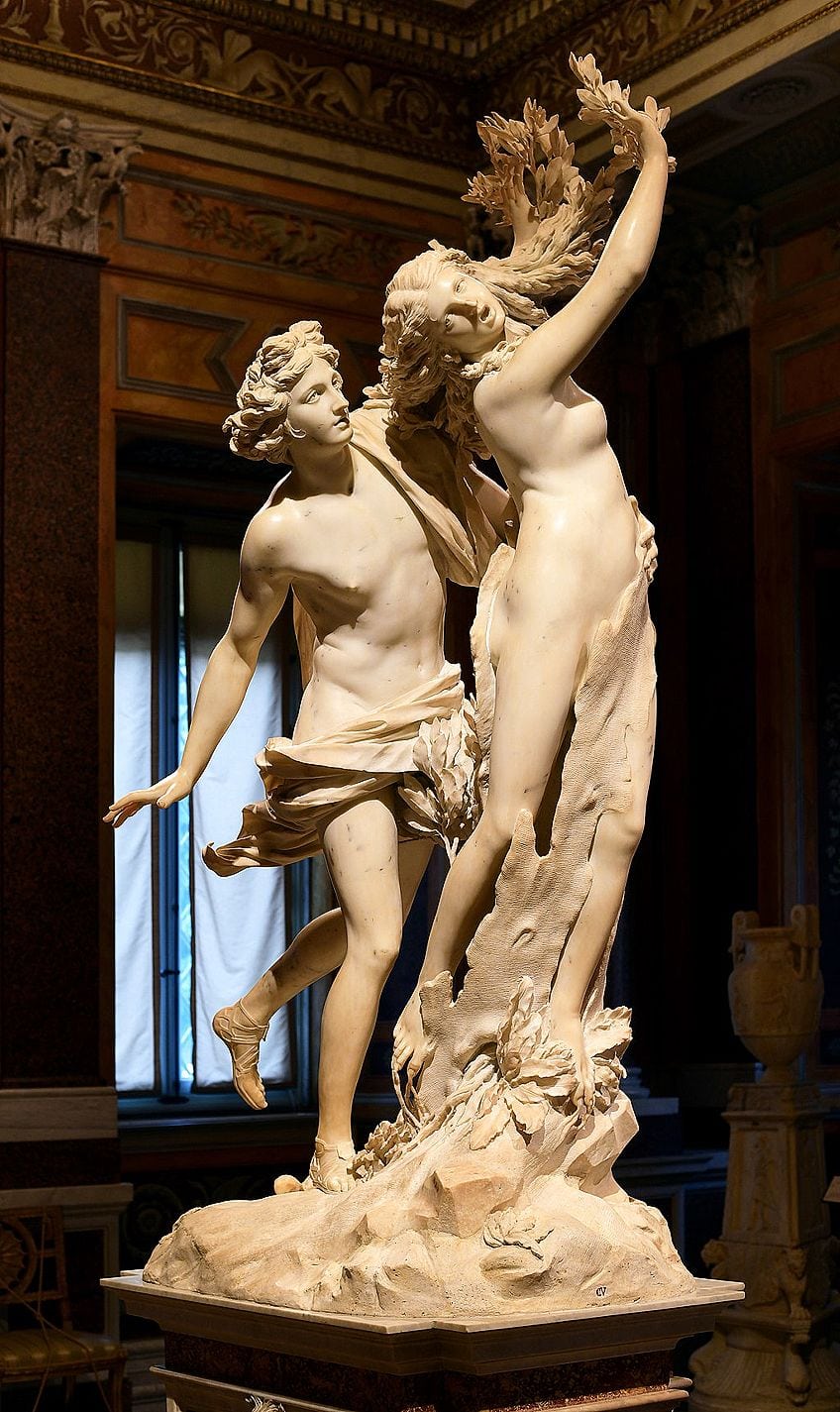
During this time, many aspiring young artists took a pilgrimage-like journey to Italy to study the works of the Renaissance masters. Upon their arrival, they were greeted with Baroque-style paintings, sculptures, and architecture.
Many took inspiration from this new art movement back to their home countries, and thus the Baroque style quickly spread throughout Europe.
The majority of countries in which the Catholic Church was still dominant began producing art similar to that found in Italy. However, many countries especially those of the Low Lands were newly Protestant. Therefore, although they began incorporating elements of Baroque art they did not have the same focus on religious imagery because the Protestant church had banned idolatry. Thus, their greatest patrons were wealthy merchants and aristocrats who mainly commissioned portraits and genre paintings.
From Baroque to Rococo
The Late Baroque period is often referred to as the Rococo period. Although it retained the ornate style of the Baroque style it was different in several ways. Firstly, Rococo began in France, not Italy. It was stimulated by the death of Louis XVI in 1715, which resulted in a more light-hearted period in France’s history. The despotic Sun King was succeeded by his great-grandson, who came to be known as Louis the Beloved.
At the beginning of the reign of Louis the Beloved, many reforms were introduced, which limited the power of the monarchy.

This made the people of France very optimistic that in the future, they would finally be allowed a say in the running of their country. This optimism was then reflected through the leading Rococo style in fashion, architecture, and art.
Rococo was far more feminine than Baroque, with a tendency towards more pastel color palettes.
There was also a shift from religious imagery back to Greek and Roman mythology, although with a more whimsical nature than during the Renaissance. Genre painting also became popular, as can be seen in The Swing (c. 1767) by Jean-Honoré Fragonard, a world-famous painting, which epitomizes Rococo art.
Artistic Characteristics of Baroque Art
There are several specific Baroque art characteristics, which make it easy to distinguish between the Late Renaissance as well as the Rococo period. The features utilized most frequently by Baroque-period artists will be discussed in the section below.
Themes
One of the easiest ways to spot a Baroque painting is by the theme of the painting. Very distinct themes, as well as rules for executing them, were evident during this period. The theme chosen by the artist may also help you decern which part of Europe the painting came from as various countries favored different themes during the Baroque period.
Religion
As has been discussed above, the Baroque period coincides with the Catholic Revival. As the papacy were generous patrons of the arts their agendas were very clear during the Baroque movement. Most artworks created in Catholic countries during this time were commissioned specifically to decorate churches and cathedrals, thus the Catholic dogma is evident.
One of the most prominent features of artworks commissioned by the Catholic church during this time is the focus on saints.
This is largely because Protestant churches were very against praying to saints as they believed that one should pray only to God. Thus, the Catholic church wanted to depict saints in a good light to justify their presence within Catholicism. One of the most famous examples of this is St. Francis of Assisi in Ecstasy (1595) by Caravaggio.
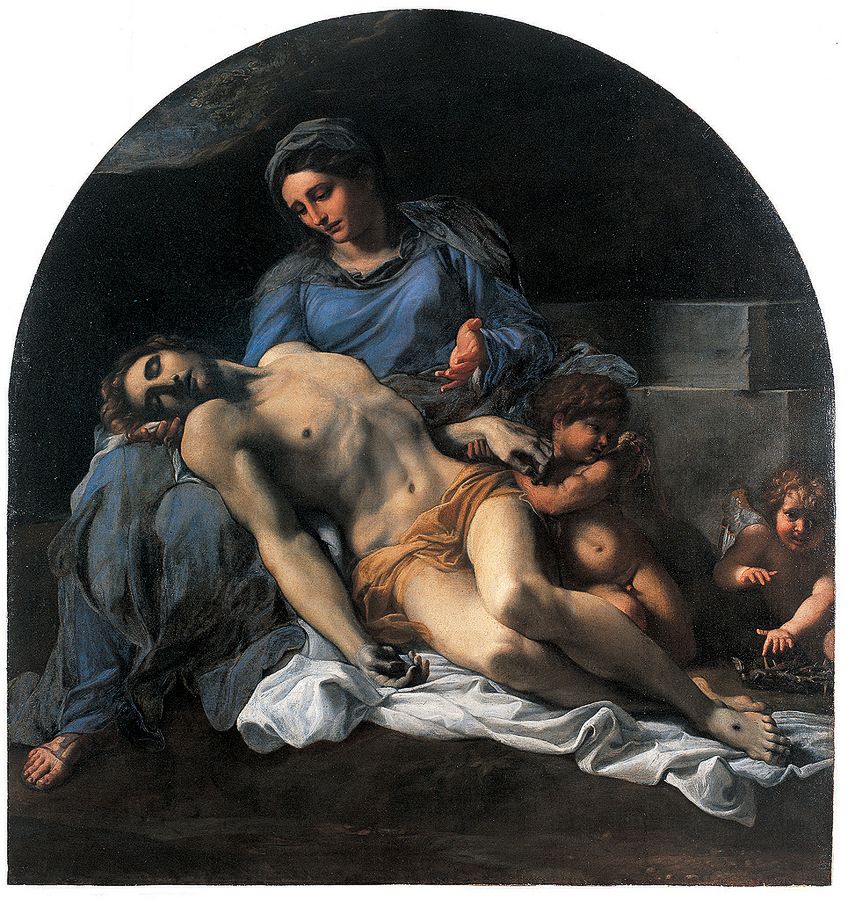
Another feature that distinguishes the religious art of the Baroque era is the condemnation of nudes within biblical depictions. During the Renaissance era, many artists created biblical allegories in their artworks, which contained nude figures.
However, during the Baroque period, the Catholic church banned any religious paintings they believed to be erotically charged.
This was mainly because they believed art should be used to teach the illiterate, rather than simply being for one’s enjoyment. Frederico Barocci was one of the first artists of this time to begin covering his figures with draped fabric.
Genre Painting and Still Lifes
In the Low Countries, there was a much higher presence of Protestantism than Catholicism at this time. In the Protestant dogma, imagery in churches was banned as it was considered to be idol worship. Therefore, artists from these countries utilized Baroque art characteristics but with different themes.
During this time, the painting of everyday scenes, also known as genre painting, became very popular in the Low Countries.

They employed the techniques of the Old Italian Masters to elevate genre painting as well as still lifes. Previously these ordinary subject matters were considered too mundane to paint. Only portraits, Classical mythology, religious allegory, and historical paintings were considered worthy subject matter.
Although artists such as Pieter Bruegel had begun exploring these themes earlier, they only really gained validation during the Baroque period.
Color and Composition
Baroque-period artists wished to infuse feelings of grandeur and extravagance into the paintings that they created. To do this, they employed certain color schemes and compositional techniques, which helped to achieve maximum drama in the pieces.
Color
One of the most distinctive features of Baroque paintings is that they were often painted on dark surfaces. As many appeared as decorations in churches they would often be painted directly onto dark wood. However, even those not created for churches were typically executed on black canvases.
As a result, colors were more muted than those painted on white backgrounds. These muted colors gave the paintings an ambiance of mystery and emotion.

Painting on a dark canvas also created high levels of contrast between highlights and shadows. During the Renaissance, the chiaroscuro technique was perfected by acclaimed artists such as Leonardo da Vinci. This use of light and shadow resulted in more realistic, three-dimensional depictions.
Baroque-period artists such as Caravaggio used dark canvases to intensify the contrast between dark, matte shadows and white, glossy highlights.
Composition
As mentioned above, Baroque-style paintings possessed a unique theatricality. One of the ways in which artists enticed the eye was through the use of subtle diagonals. This creates a feeling of movement and complexity that is more interesting to the eye than straight lines.
For this reason, many paintings of the Baroque period are either composed on diagonals or with figures forming triangular shapes.

Another trait common amongst various Baroque art forms was a fondness for symmetry. This can be seen most evidently in the music, architecture, and art of the time. Intricate details were made less chaotic via repetition and balance.
This penchant for symmetry was likely a result of the relationship between art and science forged during the Renaissance.
Techniques
Artists used several techniques during the Baroque period, which resulted in their distinctive appearance. Firstly, the distorted figures of Mannerism had been abandoned and there was a shift back to the Realism of the Renaissance period. By employing techniques such as proportion and perspective, Baroque artists were able to create figures that appeared true to life.
Due to the fact that most Baroque artists painted upon dark surfaces, many made use of a technique called scumbling.
Scumbling is when a thin layer of light-colored paint is applied over a dark background. This creates a blended gradient, which is particularly useful for creating shadows. Scumbling also gives depth to a painting because the paint of the highlights is thicker, which gives a three-dimensional effect.

Finally, another technique that was frequently during the Baroque period was quadratura. Quadratura means to quarter something in Italian, however, the term has become one that is used to describe ceiling paintings that mimic architecture. Artists that utilized this technique made use of optical illusions such as foreshortening to ceilings appear much higher. Typically, they would be painted so that they seemed to be a continuation of the interior moldings.
However, on occasion, artists would paint scenes of the sky so that it looked as though the ceilings were glass.
Famous Artists of the Baroque Period
Many famous artists were at their peak during the Baroque period. In this section, three influential Baroque-period artists, as well as their best-known works, will be explored in detail. Each of these artists contributed invaluably to Baroque art and helped shape art history as a whole.
Frederico Barocci (c. 1535 – 1612)
| Date of Birth | c. 1535 |
| Date of Death | 1612 |
| Place of Birth | Urbino, Italy |
| Nationality | Italian |
Frederico Barocci was born in Urbino, Italy circa 1535. He came from an artistic background in which many of his family members were either artists or artisans. During his youth in Urbino, he was mentored by Battista Franco, a famous painter from Venice. Looking for work, he moved to Rome where he worked as a painter in Vatican City.
His career was looking very promising until his food was poisoned by revival artists. Although he survived, it weakened him to the point where he could only paint for an hour or two per day.
Barocci returned to the comfort of his hometown. He continued to work as an artist, producing quality works, albeit slowly. His talent seemed to make up for his inability to produce artworks quickly because Barocci received commissions from many notable figures of the time. Amongst his patrons were Pope Clement VII, Emperor Rudolf II of the House of Habsburg, King Philip II of Spain, and the infamous Medici family.

Many may argue that Barocci’s career peaked before the Baroque era began. However, he is one of the first artists to make use of distinctly Baroque characteristics, implying that he was a pioneer of the movement. Although the elongated figures of Mannerism were more popular during this time Barocci’s work featured hyperrealism.
His emphasis on contrasts between light and shadows is also a trait of Baroque art.
Barocci, a devout Catholic, was one of the first artists to fully embrace the Catholic Revival in his works. This is blatantly clear in two of his most famous paintings, The Deposition (c. 1567 – 1569) and The Last Supper (c. 1590 – 1599). Both of these artworks were created specifically as altar pieces and can still be found in cathedrals within Perugia and Urbino respectively.
The Deposition (c. 1567 – 1569)
| Date Painted | c. 1567 – 1569 |
| Medium | Oil on canvas |
| Dimensions (cm) | 412 x 232 |
| Current Location | Perugia Cathedral, Perugia, Italy |
Although The Deposition contains certain Mannerist qualities (such as its vibrant color palette) it is Baroque art for several reasons. Firstly, Barocci has painted the scene up close so that the emotion in the figure’s eyes is obvious. Secondly, the figures are painted in a Realist fashion, which became popular once more during the Baroque era.
Finally, the feature that makes The Deposition unmistakably Baroque is the fabric draped across Jesus in order to cover his nudity.

The Last Supper (c. 1590 – 1599)
| Date Painted | c. 1590 – 1599 |
| Medium | Oil on canvas |
| Dimensions (cm) | 322 x 299 |
| Current Location | Urbino Cathedral, Urbino, Italy |
The Last Supper is another one of Barocci’s paintings that is recognizably Baroque. In the center of the painting is Jesus holding bread in one hand and wine in his other. This is symbolic of the Eucharist, a prominent part of the Catholic dogma.
It was also something that had Catholics and Protestants deeply divided.

Because Protestants broke away from the Catholic church, it is believed that their priests are not descendants of the apostles. Thus, they cannot transform the Eucharist into the body of Christ or the wine into the blood of Christ. This painting was a reminder of the sanctity of Catholic rituals.
Caravaggio (1571 – 1610)
| Date of Birth | 1571 |
| Date of Death | 1610 |
| Place of Birth | Milan, Italy |
| Nationality | Italian |
Michelangelo Merisi da Caravaggio was born in Milan in 1571. He is one of the most well-known Baroque-period artists in history. Throughout his career, he was known simply as Caravaggio, a name he received as it was the town of his familial home. Caravaggio was trained in Realism, which was still more popular in northern Italy than the modern Mannerism of the south.
When he moved to Rome, many were astonished by his talent for producing photorealistic paintings.
Caravaggio’s first few years in Rome were not all that lucrative. However, his artwork was eventually noticed by Cardinal Francesco Maria del Monte, who invited him to live and work at the prestigious Palazzo Madama. It was during this time that he created some of his most influential paintings, which were commissioned by the Catholic church as well as for Del Monte’s collection.

Caravaggio was known for his short temper and propensity for violence. This resulted in an incident in which he ended up killing a man by stabbing him with his sword. Consequentially, he became a fugitive, which steered him all over Italy. He even completed a short stint in a Maltese jail before escaping and fleeing back to Italy. Upon returning, he was badly maimed in yet another fight.
Trying once again to escape his troubles, he got onto a ship headed for Tuscany in 1610. It was here that he caught a fever that resulted in his death at the early age of 38.
During his tumultuous travels, Caravaggio was still able to complete several commissions. His most famous paintings, however, were created whilst he lived at the Palazzo Madama. These include Bacchus (1595) and Judith and Holofernes (1599).
Bacchus (1595)
| Date Painted | 1595 |
| Medium | Oil on canvas |
| Dimensions (cm) | 95 x 85 |
| Current Location | Uffizi Gallery, Tuscany, Italy |
Bacchus was commissioned by Cardinal Del Monte and depicts Bacchus the Roman god of wine. Typically, Bacchus is portrayed as a drunkard; however, Caravaggio painted him as an innocent young man with cheeks only slightly flushed from the wine he is drinking. This reflects the preference for paintings with decorum in the Baroque period.
Bacchus also showcases Caravaggio’s famed realism and high contrast between light and shadow.

The model for Bacchus was believed to be Mario Minniti, who Caravaggio used frequently in his work. His soft feminine features give the impression of youthful beauty, which was a prominent theme in Caravaggio’s paintings. In front of Bacchus is a bowl of rotting fruit, which is reminiscent of a vanitas painting.
It alludes to the morality preached by the Baroque era, which cautions against vanity as beauty is only fleeting.
Judith and Holofernes (1599)
| Date Painted | 1599 |
| Medium | Oil on canvas |
| Dimensions (cm) | 195 x 145 |
| Current Location | Galleria Nazionale d’Arte Antica di Palazzo Barberini, Rome, Italy |
The story of Judith and Holofernes is one that is depicted frequently within art history. It was often used by the Tuscan republic to symbolize their battle with the oppressive Medici family, which made it a particularly prevalent story in Italy.
However, before the Baroque period, many artists painted Judith in the nude to allude to her seduction of Holofernes.

In Caravaggio’s rendition, we see the clear presence of the Catholic Revival through his innocent and modest portrayal of Judith. During this time, Judith also became a symbol of the Catholic church because The Book of Judith was rejected by the Protestant church as they believed it to be apocryphal.
Rembrandt van Rijn (1606 – 1669)
| Date of Birth | 1606 |
| Date of Death | 1669 |
| Place of Birth | Leiden, Netherlands |
| Nationality | Dutch |
Commonly known as just Rembrandt, Rembrandt Harmenszoon van Rijn was born in Leiden in the Netherlands. Unlike most artists of the time, Rembrandt had no desire to venture to Italy to pursue his art career. Life as an artist in the Netherlands was not as easy as it had once been. Without the patronage of the church, artists had to seek out private sponsors, which could be difficult.
However, Rembrandt soon made a name for himself in the fields of historical painting and portraiture.
Although he created prolifically, Rembrandt and his family were often plagued by financial hardship due to extravagant spending habits. He also became well accustomed to loss after he and his wife buried their first three children whilst they were still in infancy. Soon after their only surviving child was born, his wife passed away too. However, Rembrandt was able to harness this pain and use it to infuse a unique emotion into his paintings.
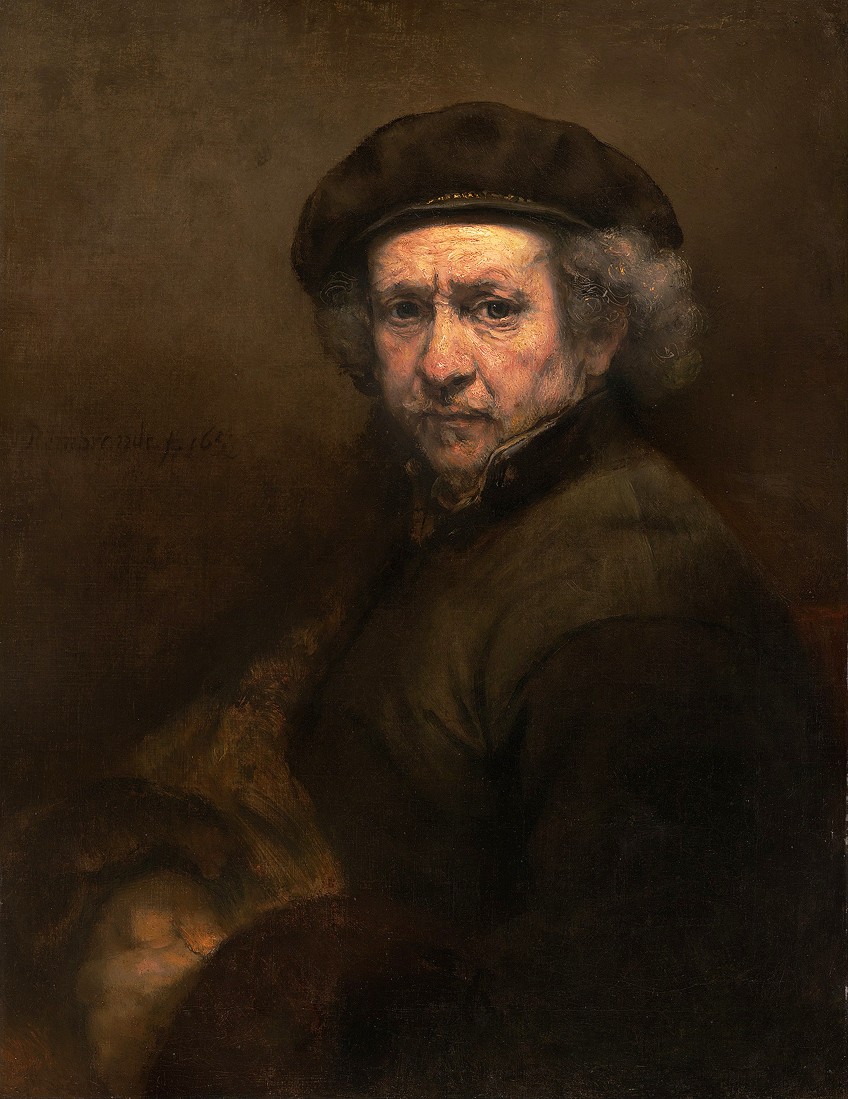
Whilst his works are distinctly Dutch Baroque, Rembrandt was heavily influenced by the work of Caravaggio. Although he did not utilize similar themes, he did employ the Italian artist’s distinctive use of contrasting light and shadow.
Rembrandt further adapted Caravaggio’s techniques, which allowed him to breathe life into his paintings like no other artist of the time.
As was typical of the Dutch Baroque style, Rembrandt painted numerous portraits. In his last few years on earth, he was particularly fond of self-portraits. One of his most famous self-portraits is The Prodigal Son in a Brothel (1635). Another one of his best-known paintings is The Night Watch (1642), which is still highly praised today.
The Prodigal Son in a Brothel (1635)
| Date Painted | 1635 |
| Medium | Oil on canvas |
| Dimensions (cm) | 63 x 52 |
| Current Location | Gemäldegalerie Alte Meister, Dresden, Germany |
In The Prodigal Son in a Brothel, Rembrandt used himself and his wife Saskia as models. This may seem an odd choice, however, if you are familiar with the story of the prodigal son and know Rembrandt’s history it is quite apt. The story of the prodigal son comes from the bible and is a tale often explored in art.
It tells the cautionary tale of a man who wasted his inheritance and had to shamefully return to his father.
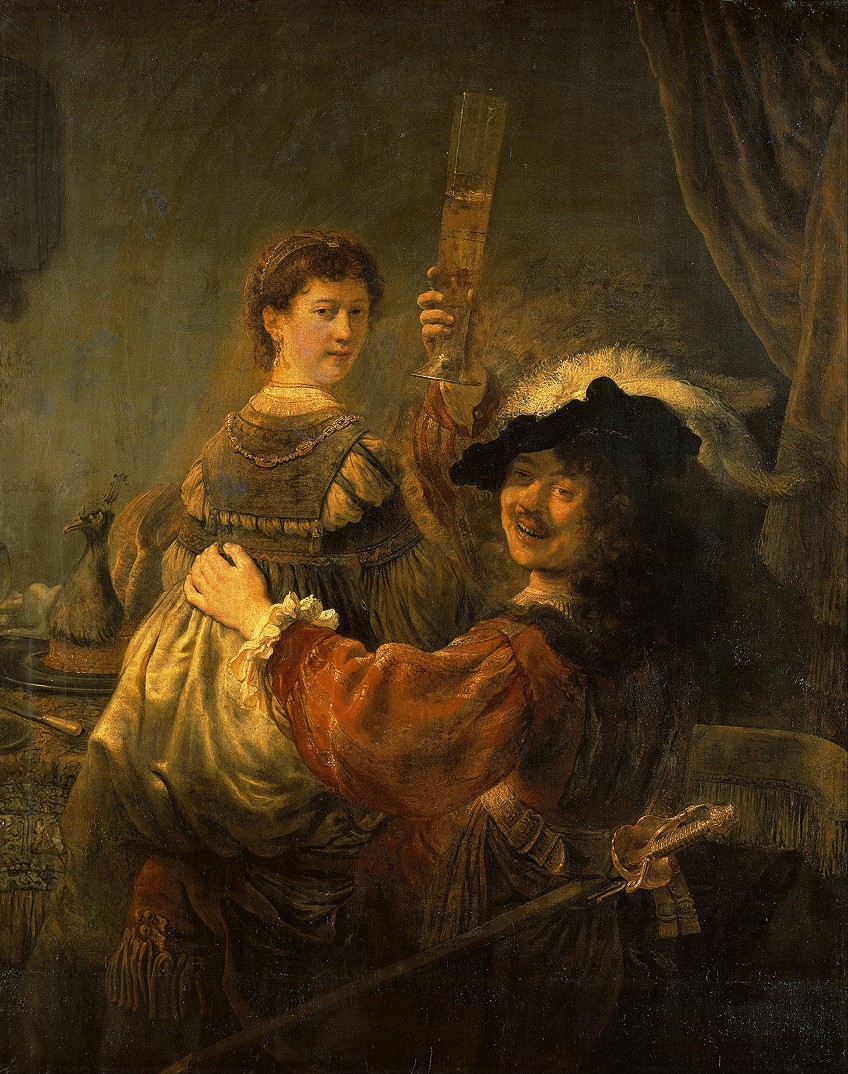
In his own life, Rembrandt was known for his extravagant spending habits. Thus, many believe the painting intended to teach a moral lesson. However, given the jovial nature of the painting as well as how hypocritical that would be many believe it to simply be humorous.
Whatever the case may be, Rembrandt imparts the grandeur and emotive spirit of the Baroque era perfectly to the painting.
The Night Watch (1642)
| Date Painted | 1642 |
| Medium | Oil on canvas |
| Dimensions (cm) | 172 x 143 |
| Current Location | Rijksmuseum, Amsterdam, Netherlands |
The Night Watch is also known as Militia Company of District II under the Command of Captain Frans Banninck Cocq. It is one of the most celebrated paintings Rembrandt ever created. This is largely due to how unique it was in its time. Rembrandt infused an official military painting with the movement and flamboyance of the Baroque period by painting the figures gearing up for battle rather than posed rigidly for a portrait. His dramatic portrayal was highly controversial upon its reveal.
His dramatic use of contrasting light and shadow is highly effective and is blatantly inspired by Caravaggio.

The Baroque style was a prominent feature in various art forms of the 17th century. It was popular all over Europe, however, each country interpreted it in its own way. This article gave only a brief glimpse into the magnificence of Baroque art. Therefore, if you enjoyed reading it, we encourage you to explore it further.
Take a look at our baroque period art webstory here!
Frequently Asked Questions
What Is Baroque Art?
Baroque art is a style of art that is characterized by its dramatic and emotive nature. Due to the Catholic Revival, which was taking place during that period in history, Baroque art is often based on Christian themes. However, in certain parts of Europe, genre painting and still lifes were more popular. Both made use of rich color schemes and flamboyant compositions.
When Was the Baroque Period?
The Baroque period is believed to have started in Italy in the early 1600s. It then spread to the rest of Europe and was at its peak for around 50 years. However, in some countries, it was popular for much longer and carried on into the next century.
Why Is Baroque Art So Dramatic?
There are many reasons why Baroque art was so dramatic. Firstly, it evolved from Mannerism, which was very exaggerated and dramatic in its way. Secondly, there was a great deal of religious tension between the Catholic and Protestant churches at the time. This caused the Catholic church to commission artworks that displayed the glory of the Catholic dogma. Finally, popular techniques used during this period, such as chiaroscuro, resulted in dramatic contrasts.
Jordan Anthony is a Cape Town-based film photographer, curator, and arts writer. She holds a Bachelor of Art in Fine Arts from the University of the Witwatersrand, Johannesburg, where she explored themes like healing, identity, dreams, and intuitive creation in her Contemporary art practice. Jordan has collaborated with various local art institutions, including the KZNSA Gallery in Durban, the Turbine Art Fair, and the Wits Art Museum. Her photography focuses on abstract color manipulations, portraiture, candid shots, and urban landscapes. She’s intrigued by philosophy, memory, and esotericism, drawing inspiration from Surrealism, Fluxus, and ancient civilizations, as well as childhood influences and found objects. Jordan is working for artfilemagazine since 2022 and writes blog posts about art history and photography.
Learn more about Jordan Anthony and about us.
Cite this Article
Jordan, Anthony, “Baroque Art – The Styles and Concepts of Baroque Period Art.” artfilemagazine – Your Online Art Source. August 26, 2022. URL: https://artfilemagazine.com/baroque-art/
Anthony, J. (2022, 26 August). Baroque Art – The Styles and Concepts of Baroque Period Art. artfilemagazine – Your Online Art Source. https://artfilemagazine.com/baroque-art/
Anthony, Jordan. “Baroque Art – The Styles and Concepts of Baroque Period Art.” artfilemagazine – Your Online Art Source, August 26, 2022. https://artfilemagazine.com/baroque-art/.



